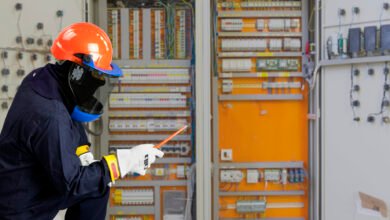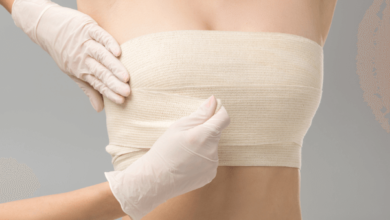Chronoflex AL: The Biomaterial That Altered the Medical Industry for Better and for Worse

In simple terms, biomaterials are natural or synthetic materials using which a part of the body can be restored. In essence, they restore the function of an organ or tissue, thereby improving human health and enhancing the patient’s quality of life.
The biomaterial used must be biocompatible and stable so that there are no adverse systemic reactions in the host’s body. Chronoflex AL is essentially an entire family of biomaterial polyurethane used for more than just prosthetics.
It is a well-loved medical polymer that has changed the course of US healthcare for the better. It has also created a worst-case scenario for the industry. In this article, you will discover both sides of the coin to understand why knowing about Chronoflex AL matters.
Understanding the Polymer’s Origins and Make
Chronoflex AL has been an important part of the medical industry for over two decades now. It is essentially a biostable thermoplastic urethane used in the manufacturing of various medical-grade products and implants.
Being biostable and ether-free means that Chronoflex AL has an extremely low modulus for elasticity. This medical-grade polymer also shows exceptional solvent resistance and has been proven to have a low softening ratio in vivo.
With varying degrees of hardness, this material is widely accepted among medical device manufacturers for aggressive disinfection procedures. Ideally, devices made using this polymer should not crumble or fail structurally under dire physical pressures.
The top manufacturer of this polymer has been AdvanSource Biomaterials, formerly popular as CardioTech International.
Wide Range of Applications
Be it the medical field of cardiology, neurology, or oncology, Chronoflex AL as a biomaterial has numerous use cases. Believed to withstand surface-level micro fissures, the polymer is useful in dip coating applications.
Let’s take a closer look at the different areas of usage:
- Sterilizable packaging is used to keep sterilized medical items safe against microbial contamination. The contamination may occur during storage, transportation, or usage of the product.
- Drug capsules are enclosed in a relatively stable shell of medical-grade polyurethane. The outer shell is needed to keep the inner contents intact.
- Implantable medical devices are surgically placed inside the human body. This is done to treat different conditions. An example would be the cardiac pacemaker or the cochlear ear implant.
- Disposable gloves facilitate one-time usage to keep infection and germs from spreading. Medical professionals are required to wear these gloves while dealing with bodily fluids like urine, saliva, or blood.
- Nerve regeneration canals are made using dissolvable electrical stimulation devices to regrow or repair nervous tissues. This process often involves a permanent cellular or biological change.
- An esophageal prosthesis is a medical device that connects an individual’s esophagus to their trachea. It is often used following a complete laryngectomy or removal of the voice box. The device restores the esophagus’ structure and function, allowing the patient to generate the most intelligible sound and speech possible.
The medical polymer market is experiencing a major growth spurt during the forecast period of 2023-2033. It will witness a growth rate of 8.4% steadily, thereby implying the ongoing popularity of Chronoflex AL and its counterparts. From the wide range of applications mentioned above, it is clear that this specific polymer has revolutionized healthcare in more than one way.
Sad Stories of Defects and Injuries
We discussed how Chronoflex AL altered the course of the medical industry for the better, so we must talk about its flip side as well. A product’s expected rise in demand does not negate the possibility of defects and risks.
Though polymers like the one this article focuses on are indispensable to the modern industry, they are not without flaws and shortcomings. Let’s take the example of the Bard PowerPort to get the point across.
Manufactured by Bard Access Systems, this device is an implantable catheter port used for repeated vascular system access. This means Bard PowerPort has been a crucial part of chemotherapy, dialysis, and other treatments requiring vein access.
Unfortunately, patients and even healthcare providers have alleged that this device has major design flaws. What’s interesting is that the complaints are attributed to the material used to develop the catheter port, Chronoflex AL.
The polyurethane seems to degrade inside the body and migrates to other parts. The injured have filed the Bard Power Port lawsuit against the manufacturer who allegedly kept the risks a secret. Common injuries associated with this device include hemothorax, deep vein thrombosis, blood clots, and necrosis or infection.
According to TorHoerman Law, as many as 232 cases are awaiting settlements in this multi-district litigation (MDL). On one hand, Chronoflex AL is the biomaterial redefining the medical industry. On the other hand, it led to Class 2 product recalls for three models of the Bard Power Port.
A Glance at the Future
Instances as unfortunate as the Bard PowerPort may continue to exist. Even so, it is unlikely that biomaterials will completely go out of demand. This is because the medical industry relies heavily on their efficacy.
Some of the factors driving the future growth of medical-grade polymers like the Chronoflex AL include –
- An increased focus on biodegradability and eco-friendliness among polymers
- The growing need for advanced prosthetics and other implants that are fatigue-resistant and chemically inert
- Constant tech advancements taking place within the medical polymer manufacturing industry
All in all, such biomaterials are crucial due to biostability and biocompatibility. As previously stated, they are not immune to complications and risks. Though it appears that the North American market is quite saturated at the moment, demand in other regions will steadily rise for these polymers.
While eradicating risks may be a bit challenging, medical device manufacturers must maintain 100% transparency. Patients and healthcare providers deserve to know the full scope of risks before they choose to use a particular device or abandon it.





